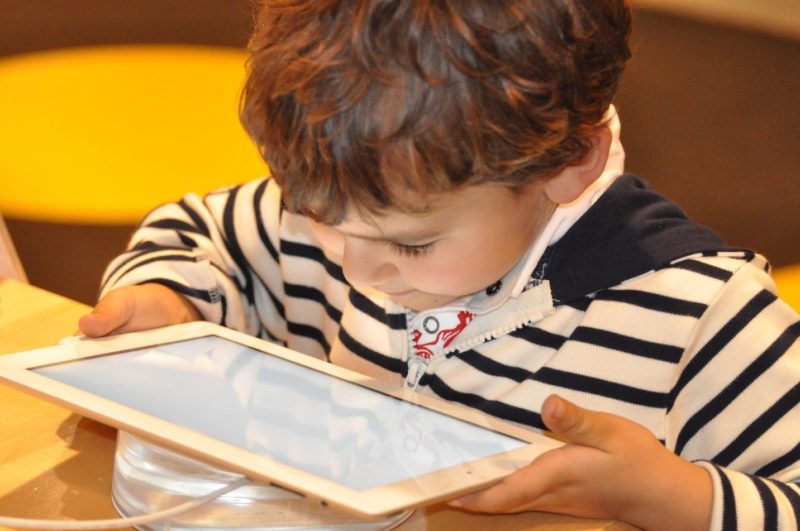Please welcome my guest Caroline from Culture Coverage. Check out the site for some great reading info on popular culture, and of course, reading. (Image credit: Pixabay)
Most of us enjoy a good book, but it’s not always easy to figure out how to share that feeling with others, especially children. We’d like to extend our thanks to Julia for featuring our post and contributing to a needed area. If you’re looking to do some reading of your own, check out her summer reading list.
Many times technology designed for adults finds its way into the hands of children. As a child, I found myself fascinated by the toys and gadgets used by adults; now, I’m on the other end of the spectrum. What TV was then, tablets and smartphones are now. Let us see then how things have changed.
In School
Several decades ago, the educational system set a goal to encourage children to read books. They did so in a variety of ways: the Reading Rainbow series, point-based test taking (e.g., Accelerated Reader), summer readings, group sessions, book reports…the list goes on.
And while many of those ideas have stuck around, smart technology has changed the delivery system. For instance, better-funded schools have begun providing tablets for each child in a classroom. Others have gone the route of individual laptops or even desktop computers. All have software installed designed for a few different things.
These apps tend to focus on helping kids get better at ready either by having them listen and respond or by playing games that incorporate reading skills. While this doesn’t replace group reading, it definitely offers some alternatives to allow each child to get more personalized attention.
The programs mentioned above such as Reading Rainbow have naturally jumped on board by creating their own apps to expand their original program to more children. Non-physical books are considerably cheaper in most cases, meaning parents can afford to purchase more reading material for their kids.
At Home
Naturally, the environment at home mirrors some of what’s happening at school. Children just barely able to walk are playing first with devices that resemble phones and tablets, while kids just entering kindergarten may already have their own devices. If configured right, these tools enable parents to offer their children entertainment beyond the television.
Busy parents may find it difficult to sit and read to their kids as often as they’d like, but with digital audiobooks, they can offer alternatives. Another big area of change is for parents that simply can’t be home: Skype or similar programs allow them to come face to face with their children no matter what the distance. It’s much better than phoning in and makes reading together very close to sitting together the old fashion way.
Tomorrow and Beyond
Today’s newest methods of engagement may not be tomorrow’s. Sure, new apps are always being developed to answer new needs, but will the technology remain the same? Wearable smart items and previously unconnected items are becoming more and more popular. In time, our children are also likely to become more connected, which means their connection to reading is likely to change as well.
Thankfully, books don’t appear to be going anywhere too soon. Kindles might be convenient, but there’s still no substitute for the physical copy of a favorite book. Children are engaging in different ways than before, but the more things change, the more they stay the same.
My own kids have very mixed interests: they read books at school, but at home they’re already becoming pretty attached to my tablet (it’s bigger and easier to use than my phone and a lot less personal). While they tend to enjoy games the most, I have to remind myself that nearly all games require some degree of reading. Even outside of the games though, they find it easier to read at home sometimes because they aren’t distracted by all their friends.
Do you have children? How have you encouraged them to become avid readers? Share with us in the comments how technology has changed the game for you!
About the Author: Caroline is a technology enthusiast and internet security specialist. Reading is an integral part of staying current in these areas; if you’d like to read more, check out some of her posts on Secure Thoughts and Culture Coverage.


Technology seemed to play a big role early on for my girls. Preschool, when they had interactive toys and books. Now, I think they associate apps and sites for school as just more homework, unfortunately.
I have two teenagers, and technology has changed so quickly since they were toddlers. We had no iPads or Kindles when they were learning to read, and now they still prefer a book to a device. It is wonderful to have a new novel on your Kindle in seconds, however – my daughter loves that!
My daughters (now aged 19 and 16) learned to read on BOB books, too. My younger daughter went through a stage where she read everything on her Kindle (which she bought herself with saved money), but that period passed. I have the Kindle now, and she prefers books. My older daughter resisted having an ebook reader, but eventually won one in a contest. She orders anime on it, mostly.
For reading, my kids stick to hardcopy books~ paperbacks and hardcovers. I let them play educational games on the Kindle their Grandma got them and have a few eBooks loaded, but with the exception of the “Bob” books, which my 7YO loved when she was just learning how to read, they prefer “real” books to the technology ones. Technology has mainly changed the game for my kids by having grade level learning games that seem more “fun” than doing worksheets 🙂